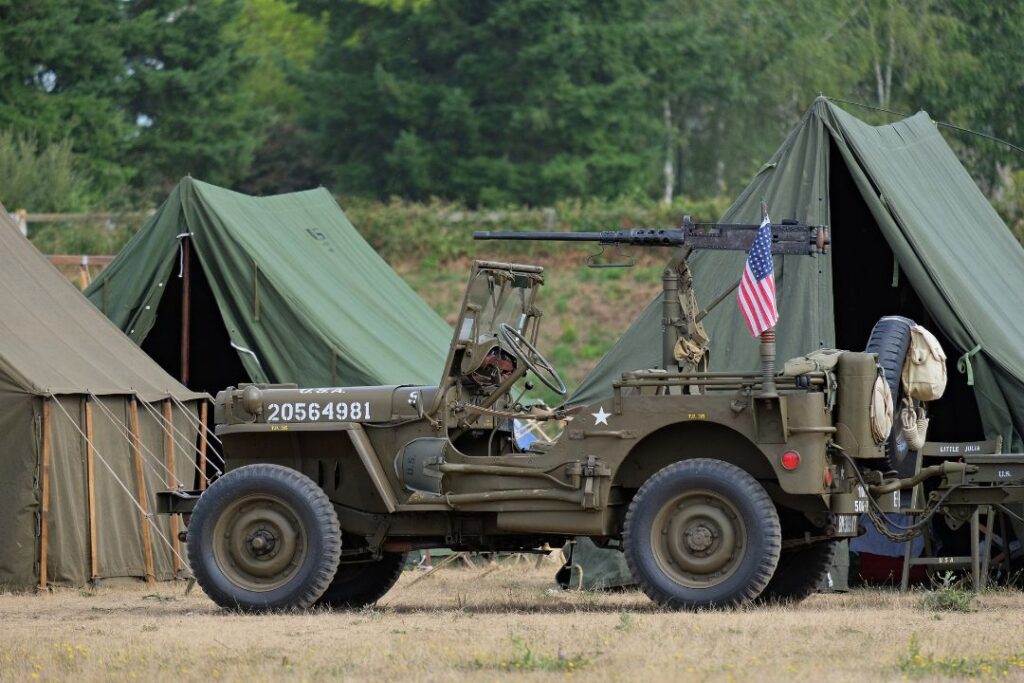
The Willys Jeep, a symbol of resilience and ingenuity, proves the remarkable impact of automotive design on military operations and civilian life. Conceived during World War II, it was not just a vehicle; it was a lifeline for soldiers, a reliable workhorse on the home front, and later, an icon of adventure and freedom during peacetime.
This legendary vehicle’s ability to traverse unforgiving terrain with ease, combined with its straightforward maintainability, positioned it as an invaluable asset in the war effort and cemented its place in history. There are many characteristics that make the Willys Jeep so special, including its influence in design and functionality in the automotive world, making it a symbol of liberty and innovation.
Pioneering Design
The creation of the Willys Jeep was a direct response to the US Army’s demand for a lightweight, durable, and versatile vehicle. Its pioneering design featured a powerful yet efficient 60 horsepower engine, a robust four-wheel drive system, and a unique, flat-fender body style that became instantly recognizable. This innovative approach to vehicle design not only met the military’s needs but also laid the foundation for future advancements in off-road vehicle engineering.
Technical Specifications
Despite its unassuming appearance, the Willys Jeep was a marvel of engineering and innovation. Equipped with a powerful engine, it could achieve speeds that were impressive for its time. This section will detail the Jeep’s technical specifications, including its engine types, horsepower, and unique features like the fold-flat windshield.
Outstanding Versatility
One of the little-known facts about the Willys Jeep is its remarkable versatility, which makes it beneficial to various industries. Initially designed for surveillance and other military purposes, its post-war incarnation found multiple uses, from farming to forestry. This versatility profoundly influenced its design, leading to the development of convertibles and wagons.
Strategic Role in WWII
The Willys Jeep’s strategic roles during World War II encompassed multiple operational tasks, each critical to the Allied forces’ success. One particularly innovative application was its use in rapid offensive strategies, facilitating swift movements of troops and supplies that often surprised enemy forces. It also had modifications for combat roles, including mounting machine guns or small artillery pieces, transforming it into a mobile weapon platform that could support infantry assaults or defensive actions.
Legacy and Influence
The Willys Jeep’s legacy extends far beyond its military service. It laid the foundation for the SUVs and off-road vehicles that dominate the roads today, influencing designs and features. Its influence transformed the design principles of utility and versatility, ensuring they are not only capable of handling rough terrain but also adaptable to a variety of driving conditions.
The attributes that make the Willys Jeep so special, from its pioneering design and technical ability to its strategic role in history, have had a great impact on the world. This legacy continues to drive forward, capturing the collective imagination and fueling the desire for exploration and discovery.


